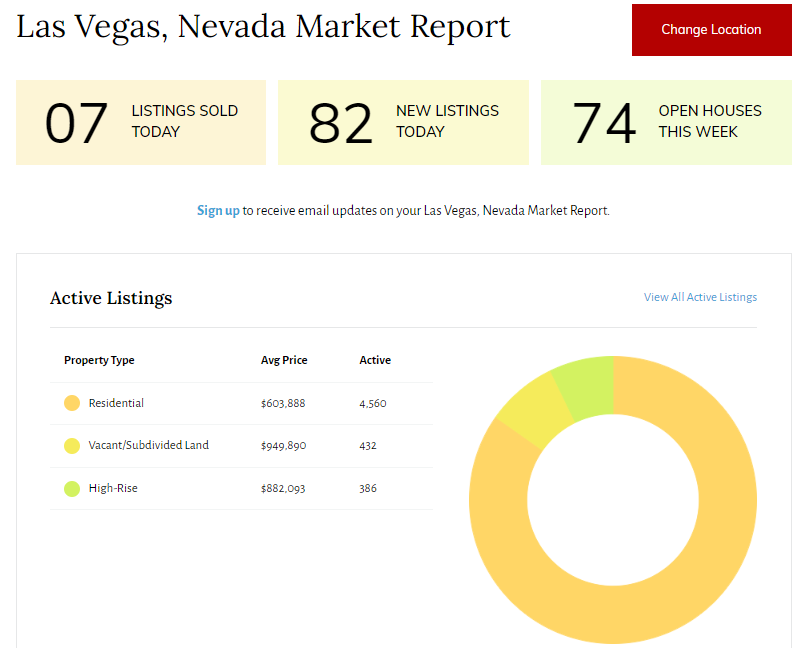If you’re a real estate agent, then you know that it’s essential to keep your clients up to date on the market. One way to do that is to create a market report for them.
Generating a monthly real estate market report is an important task for any real estate professional. It’s a way to keep your clients informed about what’s happening in the market and how it might affect them. But sometimes, generating that report can feel like a daunting task.
Where do you start? What information do you include? How do you make it look pretty? Here’s what you need to know about how to generate a timely, attractive, valuable monthly market report, with some examples, templates, and tutorials to get you started.
What is a Real Estate Market Report?
The real estate market report is an industry-standard tool that helps agents create a professional, informative, and detailed document for their leads and clients, designed to help them understand the current state of the local housing market so they can make informed decisions about when or where to buy or sell a property.
The real estate market report is a quick snapshot of market trends, including a detailed analysis of sales in a particular area, both in the immediate vicinity and historically.
Additionally, this report might include information on interest rates available for various types of mortgages, the status of upcoming listings in an area, and features that are currently being built or developed nearby. For agents who work with investment properties, the real estate market report may also include details on rental prices and vacancy rates in certain neighborhoods.
What’s the Difference Between a Market Report and a CMA?
CMAs (comparative market analyses) are used to estimate a property’s value, whereas market reports focus exclusively on market conditions. A CMA will use recent sales data to help you come up with an estimated value for a property, while a market report includes all kinds of information about the current state of the market, such as average days on the market, median prices, and more.
A CMA is created at the beginning of your selling campaign, but market reports are usually updated at least once a month. They include all kinds of helpful statistics so you can keep your clients informed about what’s going on in the industry and how it may affect them.
A market report is essential for any real estate agent looking to generate more leads and will help your clients understand where they should be buying or selling their property.
Why Create a Real Estate Market Report?
Your clients need to know how much their potential property is worth, what’s selling in the area, and whether it will be a seller’s or buyer’s market. You can provide them with this information by creating a real estate market report.
Your task as an agent is to help educate your clients so they can make smart decisions about buying or selling homes in any given season. Plus, it’s smart marketing.
Writing reports allows you to show off your knowledge of local housing trends and assist your clients with making well-informed choices about their investments. You’ll establish yourself as the expert, build trust with your followers, generate more leads, and educate homebuyers and sellers.
Because the real estate market is so fluid, rapidly changing based on supply and demand, it’s a good idea to publish market reports monthly.
With a monthly market report, you’re staying in touch with your leads and clients, so you stay top of mind.
What’s Included in a Real Estate Market Report?
There’s no one-size-fits-all approach to creating a real estate market report. However, there are some key elements that every good market report should include.
While you can include additional information (like featured properties, seasonal content, or local businesses), there are some staple statistics to include, such as:
- An overview of the current state of the housing market
- The number of houses listed, and the number sold
- The average sale price and the median sale price of homes in the area
- The average days on the market for properties in the area
- The percentage of list price that properties are selling for
- Any recent changes to zoning or building regulations that could affect the housing market
How to Create a General Real Estate Market Report
Here’s a basic outline of the steps you can take to create your own market report:
1. Collect data from a variety of sources. This could include local newspapers, online listings services, and MLS data. You’ll want to collect both current and past data so you can get a complete overview of the housing market in your area.
2. Analyze the data and identify any trends. Look for patterns in sale prices, days on the market, zoning updates, and the types of properties that are selling.
3. Write a professional report with all of your findings. Organize your information, so it’s easy for your client to understand. If necessary, include color graphs or charts with relevant info to help highlight certain trends or comparisons you’re trying to make. Include a strong call to action.
4. Share your market report with your social media followers and your email database.
Remember, your goal is to provide clients with helpful information so they can make informed decisions about buying or selling a home. By creating a real estate market report, you’re taking actionable steps toward helping your clients become smarter buyers and sellers.
Where to Get Statistics for Real Estate Market Reports
There are a number of resources you can use to get accurate, reliable statistics for your real estate market reports.
The National Association of Realtors (NAR) is a great place to start. As the largest trade association in the country, NAR represents more than 1 million members involved in all facets of the real estate industry.

In addition to data on home sales and prices, NAR also offers information on demographics, housing trends, and more.
Another great resource is The Real Estate Center at Texas A&M University. Not only does the center have detailed information on local and national markets, but it also provides helpful articles and videos that explain market trends in easy-to-understand language.
You can also find real estate market data from sources like Zillow, Realtor.com, and Trulia. These sites offer both national and local data, as well as interactive maps that allow you to drill down to specific neighborhoods or cities.
Make Your Market Report Understandable
You’ve got to do more than produce a bunch of numbers that your buyers and sellers don’t understand. To get your market reports to be valuable and engaging, explain in simple terms what each section means. Make it more human-friendly rather than a computer-generated report.
For example, an overview of the market might read, “Home values in Las Vegas are soaring this summer.”
In terms of inventory, you might write that “the market is trending in favor of sellers, with 18 listings in August, compared to July’s 22. With fewer homes available for buyers to consider, competition drives up prices. For this reason, there’s an escalation in the list price to sales price ratio.”
Your market report should also include commentary on any major changes in the market that could impact buyers or sellers. For instance, if new zoning regulations are passed that allow taller buildings in an area, you might expect to see an increase in prices as developers buy up land and build more expensive homes.
How to Customize Market Reports for Each Client
Your market report doesn’t have to be one-size-fits-all. You may want to personalize some reports based on who you’re producing them for. You can save different versions of the same market report and send it out targeted.
For example, if someone is looking for an investment property, your summary section might focus more on homes that sold in the last year or two. If they are looking at starter homes, highlight properties that recently sold in the $150,000 range.
You can even include extra details specific to certain clients like schools their children would attend or traffic updates if they work downtown and commute out of the area every day. This information could become very important to them and sway their decision in one way or another.
Make Your Market Report Beautiful
Including graphs, charts and images can make your market report more beautiful and engaging. You can use resources like Canva.com for a quick and easy DIY method or recruit help from resources like 99designs.com, upwork.com, fiverr.com, or designcrowd.com.
Brand your market reports. Your logo, color scheme, and font should be consistent so that your clients know they’re reading a market report from you. This also helps to establish trust and credibility.
If you’re clunky with words or aren’t sure how to present your information in clear, concise, inspiring ways, then consider working with a professional writer to produce the content so that your verbiage is as beautiful as your imagery. Your written content should be original and free of errors.
Real Estate Market Reports for Website SEO
You may choose to use an infographic or PDF version to send by email, but by creating well-written, detailed market reports on your website, you’re increasing your website’s search engine authority, which generates more leads.
When you write market reports, be sure to use keywords and phrases your clients might use when searching for real estate information. This will help your website rank higher in search engine results pages (SERPs) for those terms.
Plus, detailed market reports make great blog posts! Not only will you be increasing your website’s SEO authority, but you’ll also be providing valuable content that readers can use to make informed decisions about their own real estate transactions.
Market Reports as Videos
When you’re finished generating your monthly market report with all the pertinent information, you can then use that report as the basis for a short YouTube video. YouTube is the second-largest search engine in the world, so by creating and maintaining a presence on the platform with useful information like market reports, you’re tapping into an entirely different audience than those searching Google for written content.
Furthermore, you can embed your market report video into your blog for a more comprehensive post. Plus, when you include a video on a page, users have something else to engage with and stay longer on your page, both of which metrics add to your search engine authority and expertise in the industry.
You might also think about adding short video market reports on TikTok. The app is growing in popularity, and it’s a great place to share bite-sized pieces of real estate information with your audience.
Market Reports Via IDX Broker
Many real estate agents and REALTORS® take advantage of all the products and services provided by IDX Broker, which not only allows agents to elegantly display properties in a variety of ways but also empowers agents to generate a monthly market report as part of its suite of marketing tools.
The market report allows you to present the information about homes sold in your area as well as those currently for sale. You can decide how much information to include and even set up a schedule for automatic publishing. Since it’s linked to your personal website, you can be sure that each month’s report will contain your branding and all the other features you’ve included on your site.
Additional Resources
Market Report Templates on Pinterest
Market Report Templates Etsy
Market Report Tutorials on YouTube
Conclusion
Creating market reports is a great way to keep your clients in the loop about what’s happening in the market. It can also help you establish yourself as an expert in your field and inspire confidence in those who are looking to buy or sell a home. Use market reports to set yourself apart from the competition, and you’ll be well on your way to achieving real estate success!
Learn More about the BREW







